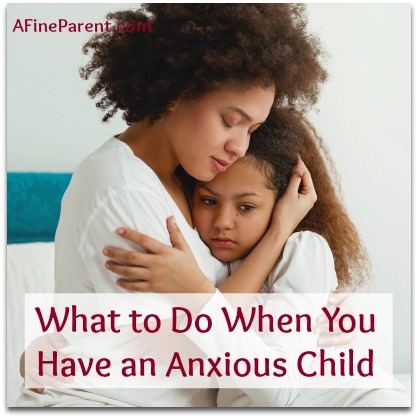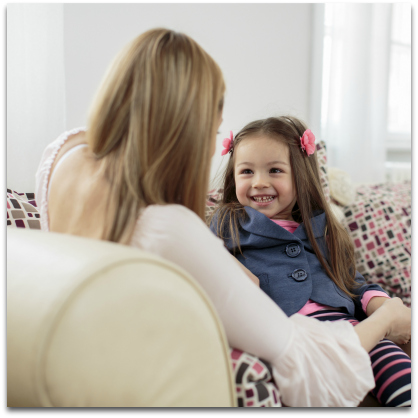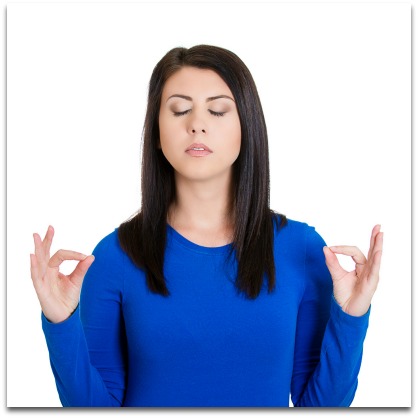 “Daaaaaaad!!!!! Get it!!!! NOW!!!!”
“Daaaaaaad!!!!! Get it!!!! NOW!!!!”
My 3 year old points to the street, where my husband had just set out the trash, at the bags of aqua green flitting in the wind.
She can’t stand it. The sight of anything BLOWING. It fills her with anxiety and dread. You can see it on her face. My husband has to run out to the curb and retrieve the bags he just moments before hefted toward the street.
When he comes back in through the door, her little body relaxes and she goes about her business. I look at my husband and give a whisper of thanks.
I, too, was just there last week. Running like an idiot through the parking lot of Walmart to chase a flyaway bag because I thought she was going to have a heart attack.
Or the time I heard screaming coming from the bathroom. “MAKE IT STOPPPP!”
I thought something terrible had happened.
I raced into the bathroom to nothing spectacular, much to my relief. Just the towels on the towel bar blossoming slightly upward from the force of furnace air emanating from the register.
Then it all came back to me. The garbage bags. The parking lot. The wind. All of these factors equaled one thing and one thing only: they made my girl ANXIOUS.
Nowadays, she has progressed from worrying about the wind to worrying about 4th grade division. But no matter the cause, anxiety can be a crippling beast.
Being the quasi-aware parent that I am, I took to the liberty to self-diagnose her with Sensory Processing Disorder.
Is this an official diagnosis? No.
Was I correct in my assumption? Not. At. All.
My poor girl just had some good old-fashioned anxiety issues that slowly left her little body as she aged into the much calmer, more self-aware, self-advocating 9 year old she is today.
Like any of us parents would, when her anxiety first became apparent, I removed any and all things that gave my girl anxiety. If the wind was blowing the trash bag outside, I’d move the bag out of the wind.
Tag scratching her neck? Cut it out.
Furnace blowing those towels around? Move the towels.
Seams making her toes curl up and scream for help? Turn those suckers inside out.
However… all of these things and constant running around to “help” ease her anxiety only made ME more anxious! It is a natural parenting “thing” to want to get rid of what is upsetting our children, but be mindful not to remove every single trigger that makes your child anxious.
According to Dr. Clark Goldstein, a child and adolescent psychologist who specializes in the treatment of anxiety and mood disorders, the goal is not to eliminate anxiety but to help our child manage it.
Our goal as parents should be to help our children learn to tolerate their anxiety and function as well as they can, even when they’re anxious. As a bi-product of that, that anxiety will decrease or fall away over time.
It did for my daughter. She knows that wind is going to blow some days. She is aware that her socks may bug the heck out of her. So I taught her to be pro-active. Wear a wind breaker. Find different socks or turn them inside out.
I have helped guide her (and continue to do so) to know what she can do to solve her own problem and make her anxiety more manageable. It is an ongoing, necessary teaching of how to advocate for herself. And it is wonderful to see the results.
We all love our children. That’s a given. It is through this love that we have already taken the first step in helping our child be their own advocate when it comes to dealing with anxiety.
We help our children learn to advocate for themselves by doing just that: loving them fiercely. That sense of love is the building block that children need to help push past that anxiety and to feel safe. A warm and supportive relationship gives a child a haven, and also a place to fall back on when the going gets tough.
That knowledge, that relationship in and of itself, can alleviate anxiety and give a child the confidence he or she needs to push past the worst of anxiety.
Here is what I’ve learned that helped my daughter through her most anxious moments:
Don’t Avoid Things Just Because they make a Child Anxious
 Obviously, if it is a huge trigger of anxiety, don’t purposely force your child to take it head-on, but don’t avoid every single thing that provokes her anxiety.
Obviously, if it is a huge trigger of anxiety, don’t purposely force your child to take it head-on, but don’t avoid every single thing that provokes her anxiety.
In his article cited above, Goldstein suggests that if you encounter a stressful situation, don’t whisk her out of there, or remove the thing she’s afraid of. When you do that, she’s learned avoidance as her only coping mechanism, and that cycle has the potential to repeat itself.
Giving her a chance to face her anxiety and push through something that is a trigger can go a long way to putting those fear in perspective.
Express Positive—But Realistic—Expectations
You can’t promise a child that her fears are not going to possibly come true. You can’t promise that she won’t fail a test or that another child won’t laugh at her during some point in school.
But you can assure her that, no matter what happens, she’s going to be okay. You can tell her she will be able to manage it and that, as she faces her fears, the anxiety level will drop over time.
This gives her confidence that your expectations are realistic, and that you’re not going to ask her to do something she can’t handle. And a positive inner voice begins to develop.
Respect her Feelings, but Don’t Empower Them
 Teach her that validation doesn’t always mean agreement. If she freaks out about getting a shot, let her know her feelings are quite normal, but don’t make a huge deal out of it.
Teach her that validation doesn’t always mean agreement. If she freaks out about getting a shot, let her know her feelings are quite normal, but don’t make a huge deal out of it.
Listen and be empathetic, help her understand what she’s anxious about, and encourage her to feel that she can face her fears. The message you want to send is, “I know you’re scared, and that’s perfectly okay. I am here to help you.”
Dr. Jennifer Powell-Lunder, a clinical psychologist specializing in work with tweens and teens, suggests allowing your child to be exposed to the very stress that can result in panic. Kids are naturally unbelievably resilient.
She states, “Sometimes, one simple success is enough to arm a child with a ‘can-do’ attitude. It can convince a child that she will survive and even thrive. Competency then is a key to conquering anxiety.”
Don’t Ask Leading Questions
Encourage your child to talk about her feelings, but try not to ask leading questions. Leading questions are those kinds of questions that assume or suggest how the child should be feeling. For example:
“Are you nervous for the first day of school?”
“Are you scared of that new boy making fun of you?”
Instead, ask open-ended questions like “How are you feeling about starting school?” “What are your thoughts on that new boy?” “Can you tell me more about what is worrying you?”
If you need help find examples of what you should and should not say to your child, check out the article, “10 Things Never to Say to Your Anxious Child,” by Katie Hurley.
Be an Example of Someone Who can Handle Anxiety
 My kids know when I am stressed out. I freak out on them, I yell, I even drop an F-bomb once in a while.
My kids know when I am stressed out. I freak out on them, I yell, I even drop an F-bomb once in a while.
I know. Not the most sterling example of how to handle things that make me anxious or frustrated. But here is how I am working on it!
I let them know I am aware of my own anxiety. I talk them through how I handle it.
“Oh, wow! I am seeing how little time I have to get us all out the door for school and I am starting to feel stressed. I’m going to take some deep breaths. Everything is going to be fine.”
Kids are perceptive, and they’re going to take it in if you keep complaining on the phone to a friend that you can’t handle the stress or the anxiety.
I’m not saying to pretend that you don’t have stress and anxiety, but let kids hear or see you managing it calmly, tolerating it, feeling good about getting through it.
Help Them Form Good Friendships
By forming a positive and supportive relationship with your child, you are in turn also teaching her to form positive peer relationships of her own. And talk to them about these relationships.
I tell my daughter often that it’s better to have one or two good, true friends than 20 who really are not that interested in being your friend at all, but stick around just to have someone to hang around with.
As your child grows and their social circle expands, she will see how influential the people in her life truly are and will have the tools and the know-how to choose the “right” ones to be around.
Teach Them to Check Their Body
 Jessica Minahan, special educator, and co-author of The Behavior Code: A Practical Guide to Understanding and Teaching the Most Challenging Students suggests to ask your child how her body feels when she is feeling anxious.
Jessica Minahan, special educator, and co-author of The Behavior Code: A Practical Guide to Understanding and Teaching the Most Challenging Students suggests to ask your child how her body feels when she is feeling anxious.
Is her stomach tight?
Do her hands feel hot?
Are her shoulders feeling squeezed?
Doing a body check may help her recognize the signs of her anxiety setting in.
With older kids, ask them where in their body they feel anxious, for example, “in your belly?” “Give them the data every day,” Minahan said. “This is your body on the way up.”
After the groundwork has been laid, parents can just say, “body check, please,” to let your child know it’s time to check in with herself and start using a self-advocating strategy.
Get Them the Things They Need
Identifying and offering tools that your child needs can help support her in advocating for herself. Afterall, Mom and Dad can’t be around her 24/7!
I work at a school that has noise-eliminating headphones. I brought some home and plopped them on her head once just to see what would happen.
It was amazing! Her shoulders relaxed immediately. Her little body seemed to loosen up and a small satisfied smile formed on her face. And she was eternally grateful.
She could finally be in a room full of people without feeling overwhelmed. Now, when she knows she is going somewhere where there will be a lot of noise or commotion (or when her little sister is at her finest), she throws those suckers on her ears and is good to go.
Self-advocacy. It’s a great thing.
Comply When They Request Help
She still hates the seams in her socks. She still refuses to wear jeans. To this day, I cut the tags out of her shirts and buy her only seamless socks. Because she has told me that’s what she needs.
By complying when she makes a request around her needs, I am empowering her. I am showing her that adults can and will listen to her.
The more successes she has around getting her expressed needs fulfilled, the more able she will feel to go to her teacher or another adult and advocate for herself.
Over time, she has adjusted to the things that give her anxiety. And so have I, as her official tag-ripping, seamless sock-buying mama. The wind doesn’t seem to scare the crap out of her anymore. Thank Goodness.
2-Minute Action Plan for Fine Parents
Take 2 minutes today to think about what makes your child anxious. Are there tools right there in your home you can give that will help?
How do you handle anxiety? What kinds of coping techniques do they see and hear you use?
Think about how you can respect her feelings without giving those feelings any power.
You cannot change the way your child is, nor would you ever want to, but pinpoint some small ways you can help your child overcome this anxiety. Just being open and honest about it helps a ton. It validates the fact that we are human and these feelings are okay!
Long-Term Action Plan for Fine Parents
Keep on keeping on! You’re doing great! You did not cause this anxiety in your child (believe it or not!) and you CAN HELP HER HANDLE IT!
Make a pact with your child that assures her that you are there to help no matter what. Be open about it. Ask her what she needs from you.
Start working with them on Body Checks. Eventually you will get them to recognize the first signs of their anxiety.
Journal about what is making your child anxious and brainstorm ideas of what you can do to help them face it and what solutions you can empower them to advocate for.
Great article Melissa! With three daughters that all have some sort of anxiety that has surfaced since our house fire I have also learned, as you have, to help them cope and manage their anxiety. Exposure, with support, has worked well for us. The other area we focus on is siblings respecting each others’ anxiety or fears and not making fun of issues that may seem silly to them. You’re doing a great job with your girls!
I am so glad!! My dauhgter is 10 now and is doing so much better!
Very useful. Thank you for sharing!
Omg needed this article today! This is my three and a half year old. She can be so anxious and it’s gets exhausting. But your article reminds me of what I need to do to empower her to feel her feelings and know that it will be ok. thank you!
Wonderful article that I can bookmark and come back for to read again and again. As a anxious person myself this article really has many techniques that can help me and in return help my children.
I am so happy to hear that you found it helpful!